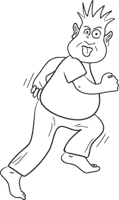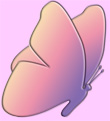 Background Concepts to Mood Yoga
Background Concepts to Mood Yoga
2. Stress: Fight or Flight
In the human body, the autonomic nervous system, which is in charge of involuntary functions like our heart beat, is divided into two parts: the sympathetic and the parasympathetic divisions. The sympathetic response of the autonomic nervous system is called the fight or flight response. This is a process of adaptation in response to danger—it prepares the body to run away or fight in the event of a threat. Basically, the body is flooded with adrenaline, the digestive process ceases, the heart pumps faster, blood serges through the veins and the muscles tighten, the immune system becomes inactive and the whole body prepares itself for action. This response is initiated by the primitive or reptilian area of the brain and it is part of our self-preservation instinct. This process starts with perception. We see something, instantly assess the situation, and if we think there's a threat, then we react to this threat by physically preparing for action.
In contrast, it is the parasympathetic division of the autonomic nervous system that returns the body to its natural state of balance (homeostasis)—allowing the body's systems to return to their normal function. This is the process we actually focus on in yoga practice. Yoga helps us to leave the 'poised for action state' and return to a state of equilibrium. This is important because if the body is held in a state of alert for too long its basic functions are hindered. Much like a violin string that, when pulled too tight, will snap—when the body is held too tight for too long it starts to wear down.
Yoga is a wonderful way to engage the body's relaxation response. Naturally, our cognitive processes play an important part in this. We have two ways of inducing relaxation—one is to clear the mind of thought by focusing on the body, the other is to use thoughts to create the desired response. Mood Yoga works with both of these approaches. What we are trying to achieve with Mood Yoga is a state of balance—something removed from destructive emotional or instinctive reactions and more akin to productive and consciously aware emotional responses.
Pictured: The moody ogre, illustrated by Charlotte Gelin. Send Charlotte an e-mail.
Background Concepts to Mood Yoga Continued:
Mood Yoga—The Method & The Book:


